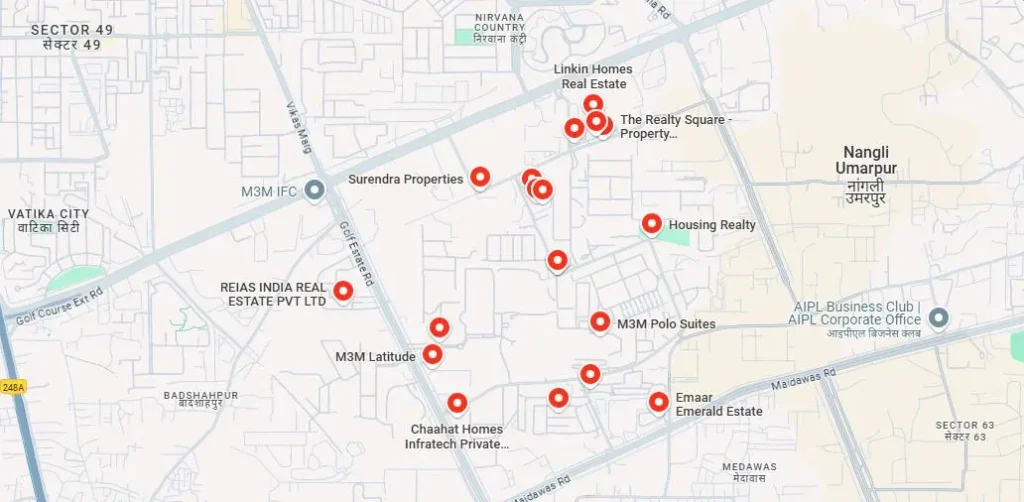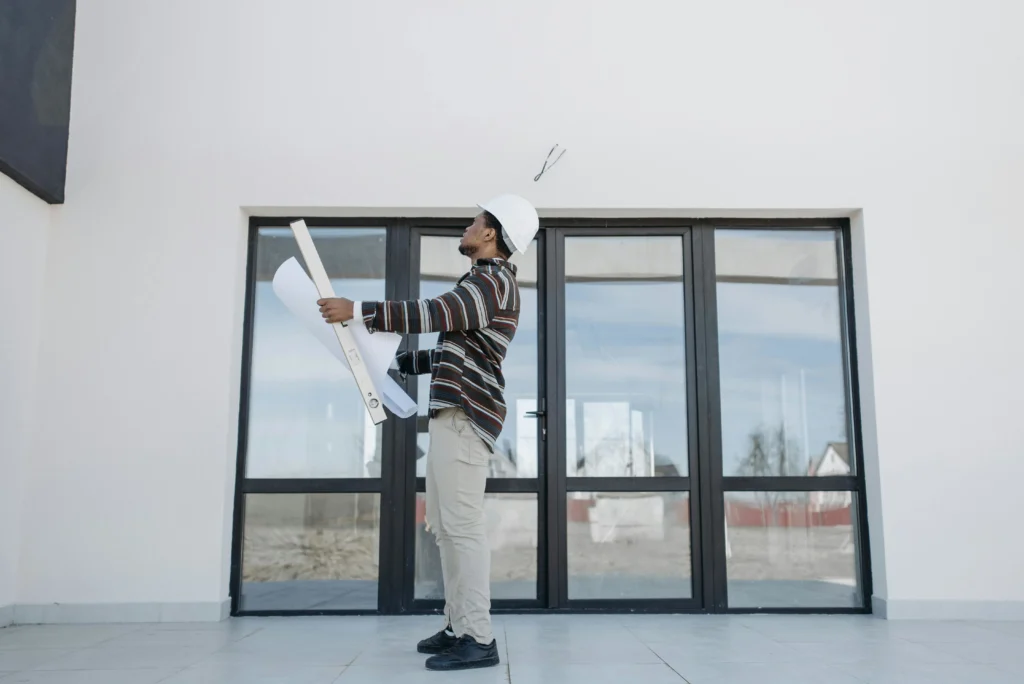In the vast digital landscape of real estate, visibility is paramount. Yet, for most property developers and marketers, the concept of online visibility is often misinterpreted as a quest for national or even global recognition. While brand prestige is important, the reality of the property search process is intensely local. Prospective buyers are not searching for “luxury apartments”; they are searching for “luxury apartments for sale in Gurgaon Sector 65.” This distinction is the critical pivot upon which entire marketing fortunes are won or lost.
Many real estate firms invest heavily in broad-stroke digital campaigns, yet they remain practically invisible to their most qualified, high-intent audience—the buyers in their immediate vicinity. This failure to capture local search traffic is no longer a minor oversight; it is a fundamental strategic flaw. The modern customer journey begins with a local query, and if your project doesn’t appear prominently within that localized search result, for all intents and purposes, it doesn’t exist.
Local SEO is not merely a component of a digital strategy; it is the strategic foundation for real estate marketing in 2025 & 2026 and beyond. It is a meticulous, multi-faceted discipline designed to establish your project as the definitive authority within a specific geographic area. This is not about simple tricks or shortcuts. This is a blueprint. What follows is a comprehensive guide for industry leaders to construct a dominant local search presence, transforming digital visibility into tangible commercial success. This is how you move from being just another listing to a local landmark. As a specialized real estate seo agency, we understand that executing this blueprint is one of the most vital digital marketing services for real estate today.

Pillar 1: The Foundational Layer – Your Digital Headquarters
Before you can dominate the local map, your own digital property—your website—must be architecturally sound. Google’s ability to understand and rank your project locally begins with the clarity and specificity of the signals you provide on your own pages. This foundation rests on two core components: precision on-page optimization and a technical language that search engines understand fluently.
On-Page Optimization for Hyper-Local Intent
The era of a single “Projects” page is over. To effectively capture local traffic, each significant project or location requires its own dedicated, optimized landing page. This creates a highly relevant destination for both users and search engine crawlers.
- Location-Specific Landing Pages: Each key project should have a unique URL (e.g., yourbrand.com/villas-sohna-road-gurgaon). This page must be a comprehensive hub of information, containing everything a potential buyer needs: detailed descriptions, specifications, high-resolution galleries, virtual tours, and clear calls-to-action.
- Optimized Metadata: The behind-the-scenes data is what gives Google its first impression. Your Title Tags, Meta Descriptions, and Header (H1) tags must be crafted with precision. Instead of a generic “Luxury Villas for Sale,” the optimal structure is “4BHK Luxury Villas in Sector 65, Gurgaon | Your Project Name.” This immediately signals relevance for a specific local search.
- Embedded Maps & Location Data: An interactive Google Map showing the precise location of the project should be embedded directly on the page. Furthermore, the complete NAP (Name, Address, Phone Number) must be present and consistent, ideally in the website’s footer and on the contact page. This consistency is a powerful trust signal for search engines.
Local Schema Markup: Speaking Google’s Language
Schema markup is a specialized vocabulary that you add to your website’s code. It doesn’t change how the page looks to a human visitor, but it acts as a powerful translator for search engines, helping them understand the context of your content with zero ambiguity. For real estate, implementing the correct schema is a technical requirement for competitive visibility.
- RealEstateListing Schema: This is the most crucial type. It allows you to define specific attributes of a property listing—such as price, availability, square footage, and number of bedrooms—in a structured format. Correct implementation can lead to “Rich Snippets” in search results, making your listing stand out with more detail than your competitors’.
- LocalBusiness Schema: This markup identifies your sales office or corporate headquarters as a legitimate local entity. It reinforces your physical presence and NAP details, strengthening your connection to a specific geographic location.
- BreadcrumbList Schema: For websites with multiple project pages, breadcrumb navigation helps both users and Google understand the site’s hierarchy. Marking this up with schema helps Google display a cleaner, more navigable site structure in the search results.

Pillar 2: The Proximity Signal – Google Business Profile (GBP) Dominance
If your website is your digital headquarters, your Google Business Profile is your hyper-local flagship store. For local searches, particularly those with terms like “near me,” the GBP listing is often more prominent than organic website results. Simply verifying your profile is the bare minimum; dominating the “Map Pack” requires meticulous and continuous optimization.
Beyond Verification: Optimizing Every Facet of Your GBP
- Categories and Services: Choosing the right primary category (e.g., “Real Estate Developer”) is vital. However, the secondary categories and “Services” sections are where you can gain an edge. List every specific service you offer, from “Commercial Property Leasing” to “Luxury Condominium Sales.” This allows you to rank for a wider array of specific local queries.
- High-Quality, Geotagged Visuals: Your GBP should be a rich, visual showcase of your project. Regularly upload high-resolution, professionally shot photos and videos of the property, its amenities, construction progress, and the surrounding neighborhood. Crucially, ensure these images are geotagged with the project’s coordinates before uploading, providing another powerful local signal to Google.
- Consistent Google Posts: The “Posts” feature is a free, high-visibility tool for sharing updates, announcing new inventory, highlighting special offers, or promoting events. These posts have a limited lifespan, so a consistent strategy of publishing at least once a week keeps your profile looking active and relevant, both to users and to the algorithm.
- Proactive Q&A Management: The Q&A section is often overlooked, but it is a public forum where potential buyers ask critical questions. Do not wait for the public to ask. Proactively populate this section by asking common questions (“What are the school options nearby?” or “Is there a flexible payment plan?”) and providing clear, authoritative answers. This allows you to control the narrative and provide immediate value.
Mastering these elements requires dedicated effort and expertise. It’s a key area where partnering with a skilled real estate seo agency can provide a significant advantage, ensuring every component of your GBP is working to maximize local visibility.

Pillar 3: The Authority Layer – Building Local Trust and Relevance
Once your on-site and GBP foundations are solid, the next step is to build authority outside of your own properties. Google determines your local prominence not just by what you say about yourself, but by what the rest of the local digital ecosystem says about you. This is accomplished through a combination of consistent local citations and a hyper-local content strategy.
Local Citation and Directory Management
A “citation” is any online mention of your project’s Name, Address, and Phone Number (NAP). These mentions, even without a direct link to your website, help Google verify your location and legitimacy.
- Consistency is Key: The single most important factor in citation building is consistency. Your NAP must be absolutely identical across every platform, from major real estate portals like 99acres and MagicBricks to local business directories like Justdial. Discrepancies, such as using “St.” on one site and “Street” on another, can create confusion for search engines and erode trust.
- Building Relevant Citations: Focus on quality over quantity. A citation from a relevant, industry-specific directory or a local chamber of commerce website is far more valuable than hundreds of listings in low-quality, generic directories.
A Hyper-Local Content & Backlink Strategy
To truly establish yourself as a local authority, your content must serve the local community. This means moving beyond property descriptions and creating resources that demonstrate your deep understanding of the neighborhood.
- Hyper-Local Content Ideas: Create in-depth blog posts and guides on topics your target audience cares about, such as “A Guide to the Best International Schools near Sector 65, Gurgaon,” “Analyzing the Future of Metro Connectivity on Sohna Road,” or “A Comparison of Property Tax and Maintenance Costs in [Neighborhood A] vs. [Neighborhood B].” This content attracts top-of-funnel local traffic and positions you as a trusted local expert.
- Building Local Backlinks: The holy grail of local SEO is earning backlinks from other reputable local websites. This tells Google that you are a legitimate and important part of the local community. Engage in digital PR by sharing project milestones with local news outlets. Collaborate with local businesses, such as a prominent interior design firm or a local lifestyle blogger, to create co-branded content and earn valuable, contextually relevant links.

Pillar 4: The Reputation Engine – Reviews and Social Proof
Online reviews are a direct and powerful local ranking factor. Google’s algorithm sees a steady stream of positive reviews as a strong signal of trust and quality. More importantly, your potential buyers see them as essential social proof.
- Develop a Review Generation Strategy: Actively encourage satisfied clients and channel partners to leave feedback on your Google Business Profile. Integrate this request into your post-sale follow-up process. Make it as easy as possible by providing them with a direct link to the review form.
- Respond to Every Review: This is non-negotiable. Thank customers for positive reviews. For negative reviews, respond promptly, professionally, and empathetically. A well-handled negative review, which acknowledges the issue and offers a resolution, can often build more trust than a dozen positive reviews. This shows that your company is responsive, accountable, and committed to customer satisfaction. This proactive reputation management is a critical component of any comprehensive local SEO strategy.
From Blueprint to Digital Landmark
Achieving local search dominance in 2025 & 2026 is not the result of a single action, but the culmination of a persistent, integrated strategy. It requires building a technically sound website foundation, meticulously optimizing your Google Business Profile, establishing off-site authority through local content and citations, and actively managing your online reputation.
This blueprint provides the architectural plan. Executing it requires expertise, resources, and a deep understanding of how these pillars work in concert. For real estate leaders, the mission is clear: transform your digital presence from a simple pin on a map into a true digital landmark, ensuring that when your most qualified buyers search, they find you first.
Frequently Asked Questions
1. What is the fundamental difference between general SEO and Local SEO for a real estate project?
General SEO aims to achieve visibility on a national or even global scale, which is ideal for e-commerce or SaaS brands. Local SEO, however, is a highly specialized discipline focused on dominating search results within a specific geographic area—a city, a neighborhood, or even a single postal code. For real estate, where the customer is almost always geographically constrained, Local SEO is paramount. It answers the user’s implicit query of “near me” by optimizing for proximity-based ranking factors like Google Business Profile signals, local citations, and community-focused content, ensuring your project is visible to the highest-intent buyers actively searching in your location.
2. How long does it typically take to see tangible results from a comprehensive Local SEO strategy?
While some immediate improvements can be seen from technical on-page fixes and Google Business Profile optimization within the first 30-60 days, Local SEO is a long-term strategy. Building true local authority, earning high-quality backlinks, and accumulating positive reviews takes time. Typically, clients can expect to see meaningful gains in local map rankings and organic traffic within 4-6 months, with the results compounding over time. The goal is not a temporary spike in traffic, but sustained, long-term dominance in your target market.
3. Our project is in the luxury segment. Is Local SEO as critical for high-end properties as it is for affordable housing?
It is not only critical; it is arguably more so. High-net-worth individuals and luxury property buyers are conducting hyper-specific local searches, often including terms related to exclusivity, specific architects, or premium amenities (e.g., “golf course villas near DLF Golf and Country Club”). A sophisticated Local SEO strategy allows you to target these affluent, low-volume but high-value keywords. It also heavily involves reputation management, as social proof and online reviews are meticulously vetted by discerning luxury buyers before they engage with a brand.
4. Can our in-house marketing team manage our Google Business Profile (GBP), or is professional management necessary?
While an in-house team can certainly handle basic updates, professional management by a specialized real estate seo agency ensures the platform is utilized as a strategic asset, not just a directory listing. Professional management includes advanced optimizations such as weekly Google Posts with targeted calls-to-action, proactive Q&A seeding to control the narrative, ongoing photo and video uploads with proper geotagging, vigilant review response management, and analysis of GBP Insights data to inform content strategy. This consistent, detailed effort is what separates a basic profile from one that dominates the local map pack.
5. What kind of content is most effective for a “hyper-local” content strategy beyond property descriptions?
Effective hyper-local content positions your brand as the definitive expert on the community surrounding your project. This involves creating valuable resources that answer the lifestyle questions of potential buyers. Examples include:
- An in-depth guide to the top international schools within a 5km radius of your project.
- A comparative analysis of local infrastructure developments, like a new metro line or commercial hub, and their impact on property values.
- Interviews with local business owners or community leaders.
- “A Day in the Life” articles or videos showcasing the lifestyle of the neighborhood (e.g., parks, cafes, cultural spots).
This content attracts organic traffic, builds immense trust, and provides excellent material for earning local backlinks.
6. My marketing team is already busy. What specific tasks does a real estate seo agency handle within this blueprint?
A dedicated agency offloads the entire complex execution of the blueprint. This includes:
- Technical SEO: Conducting a thorough audit of your website, implementing schema markup, and optimizing page speed and mobile-friendliness.
- On-Page SEO: Crafting optimized metadata and content for each project landing page.
- GBP Management: Handling all aspects of your Google Business Profile optimization, from posts and photos to Q&A and review responses.
- Citation Building: Meticulously building and cleaning up your business listings across dozens of relevant online directories to ensure NAP consistency.
- Content & Link Building: Developing the hyper-local content strategy and executing digital PR to earn high-authority local backlinks.
- Reporting: Providing detailed monthly reports on keyword rankings, traffic growth, and lead attribution, translating performance into clear business ROI.
7. What exactly is “Schema Markup,” and why is it so important for real estate websites?
Think of Schema Markup as a specialized language you add to your website’s code to speak directly to Google. While a human sees a price on your webpage, Schema tells Google’s algorithm, “This specific number is the price for this specific property listing.” This eliminates ambiguity and allows Google to understand your content on a deeper level. The primary benefit is eligibility for “Rich Snippets” in search results—enhanced listings that can show property prices, availability, star ratings, and more, making your website stand out and significantly increasing click-through rates.
8. How should our team handle negative reviews on our Google Business Profile?
Handling negative reviews professionally is a powerful opportunity to build trust. The strategy is:
- Respond Promptly: Acknowledge the review within 24-48 hours.
- Empathize and Do Not Argue: Start by acknowledging their frustration (e.g., “We are sorry to hear you had a frustrating experience.”).
- Take it Offline: Provide a direct point of contact (a name, email, or phone number) to discuss the specific issue privately. This shows you are taking the matter seriously and avoids a public argument.
- Keep it Professional: Avoid defensive language. The goal of your public response is not to “win” the argument, but to show all future prospects that you are a responsive, accountable, and customer-focused organization.
9. Our real estate company targets multiple neighborhoods within a large city. Should we create a separate landing page for each one?
Absolutely. This is a cornerstone of effective Local SEO. Creating a dedicated, optimized landing page for each target neighborhood (e.g., “Apartments in Andheri West,” “Flats for Sale in Bandra Kurla Complex”) allows you to tailor your content and keywords specifically to that area. Each page can feature unique content about the neighborhood’s amenities, lifestyle, and market trends, along with property listings specific to that location. This strategy dramatically increases your relevance for highly specific user searches, leading to higher rankings and better-qualified traffic compared to a single, generic “Properties in Mumbai” page.
10. Beyond the blueprint outlined, what is the next evolution in local search for real estate?
The next frontier is a deeper integration of personalization and new technologies. This includes optimizing for Voice Search, where users will ask conversational questions like, “Hey Google, show me pet-friendly 3BHKs with a park nearby.” It also involves leveraging AI for predictive local search, where your website could anticipate what a user is looking for based on their profile and show them hyper-relevant neighborhood content even before they search for it. Ultimately, the future is about creating a truly one-to-one, advisory experience at a local level, a core focus of advanced digital marketing services for real estate.



